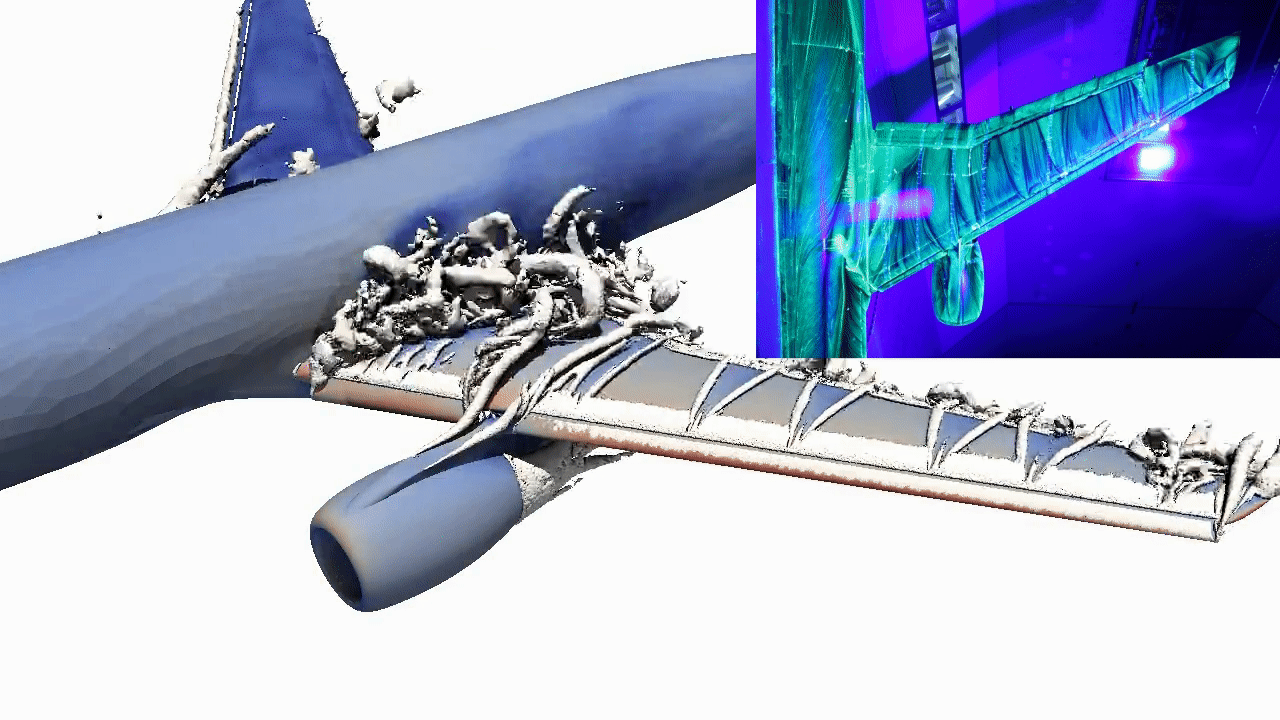Resolution of the Secret of Flight
– No one can explain why planes stay in the air - claims Scientific American.But we can.
Our Real Flight Simulator (RFS) offers a breakthrough of the NASA grand challenge in aerodynamics: predictive simulation of turbulent separated flow, and a New Theory of Flight giving understanding of why planes stay in the air to the general public, scientists and engineers.
The recent Boeing events illustrate the very strong consequences of lack of understanding.
Real Flight Simulator
The innovation can be seen as a new computational form of first principle physics captured in Euler's equations with a slip boundary condition. RFS is world-unique in advanced adaptive finite element form without any need of turbulence and wall modeling, which has long blocked advancement in CFD, as witnessed by authorities in the field.
RFS predicts the full aerodynamics of airplanes including stall and flow separation, cars, boats and wind turbines 10x-100x faster and cheaper and beyond the scope of conventional frameworks. The technology opens completely new possibilities for virtual design, certification, reliable Digital Twin, a realistic simulation environment for autonomous control and increased safety and so on.
The slip boundary condition is the key to capture the true physics of flow separation as 3d rotational slip separation, shown to be impossible with conventional techniques.
We are currently reaching the highest echelon in the industry, for example one of the best Formula 1 teams and leading aircraft companies. We are also recognized at the highest level: NASA and a Fields medalist have highlighted our work, we have been elected to the IVA Royal Swedish Academy of Engineering Sciences 100-list.
Our Digital Math solution preserves the scientific method. It's reproducible, falsifiable, and enables co-development with clients. The software is based on our automated Open Source Unicorn/FEniCS software, which we started, and is now de-facto world standard.
Contact us for questions or a pilot project - where we demonstrate commercial benefit as described above.
New Theory of Flight
Based on RFS everyone can understand why planes stay in the air, as non-separating flow on the leading edge and upper of a wing redirecting flow downwards, and flow separation on the trailing edge, as illustrated below:

with prediction of turbulent separated flow, as in our world-unique results predicting stall in the AIAA Third High-Lift Prediction Workshop organized by NASA and Boeing:

Read more details in our references and try yourself with our Open Science and Open Source Digital Math Real Flight Simulator in a one-click "elastic supercomputer" in Amazon AWS!
References
Johan Hoffman, Claes Johnson, Computational Turbulent Incompressible Flow, Springer, 2007
Claes Johnson, Johan Jansson, Secret of Flight Web Site, 2012- (older format)
Claes Johnson, Johan Jansson, Secret of Flight Web Site, 2020- (new format, to appear)